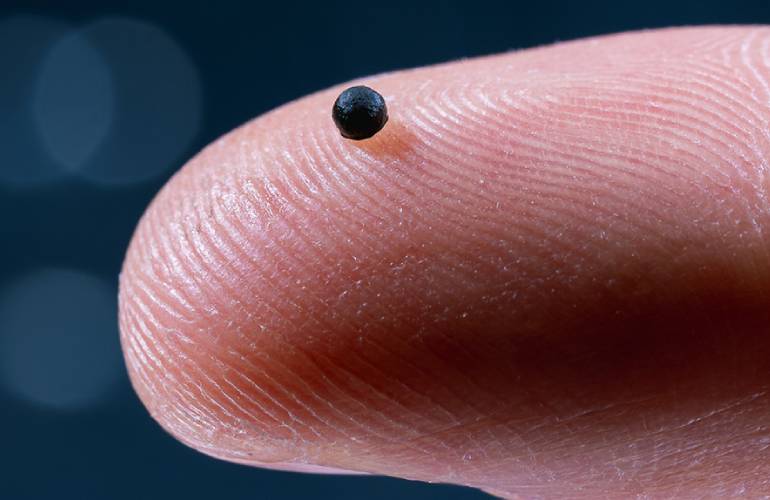In the intricate landscape of modern medicine, the quest for highly targeted drug delivery remains a formidable challenge. Conventional treatments often distribute therapeutic agents throughout the body, leading to undesirable side effects and reduced efficacy at the specific diseased site. However, a significant stride towards overcoming this hurdle has been made by researchers at ETH Zurich, who have developed sophisticated microrobots capable of navigating the human body to deliver drugs with unprecedented precision. This innovation promises to redefine treatment paradigms, particularly for complex conditions prevalent globally, including in India.
The Promise of Precision: Microrobots for Targeted Therapy
The core innovation lies in the design and functionality of these microscopic robots. Measuring just a few micrometers, these tiny machines are engineered to move autonomously through the body’s intricate network of fluids and tissues. Unlike earlier prototypes, the ETH Zurich microrobots are often composed of biocompatible, biodegradable materials, ensuring they do not accumulate harmful substances in the body and can be safely broken down after their mission is complete. Their primary advantage is the ability to ferry therapeutic payloads – be it potent chemotherapy drugs, gene therapies, or antibodies – directly to the precise site of disease, such as a tumour, an inflamed organ, or an infection hotspot.
This targeted approach stands in stark contrast to systemic drug administration, which often results in only a fraction of the drug reaching its intended target, while the rest circulates, causing damage to healthy cells and tissues. For patients battling chronic illnesses or aggressive cancers in India, where access to advanced yet gentle treatments is a growing imperative, such precision could mean the difference between debilitating side effects and an improved quality of life with enhanced treatment efficacy. The technology holds particular relevance for conditions like glaucoma or specific types of cancers where localized drug concentrations are critical for successful outcomes.
Navigating the Body: A Micro-Engineering Marvel
The ability of these microrobots to navigate the complex, often viscous environments within the human body is a marvel of micro-engineering. Researchers have employed various propulsion mechanisms, with magnetic guidance being a prominent and promising method. By incorporating tiny magnetic particles, these microrobots can be precisely steered from outside the body using external magnetic fields. This allows clinicians to direct the robots through blood vessels, ocular fluids, or even cerebrospinal fluid, ensuring they reach their intended destination with remarkable accuracy.
Beyond navigation, the microrobots are designed for controlled drug release. This means that once they reach the target site, the therapeutic payload can be released in a controlled manner, either gradually over time or upon receiving a specific trigger, such as a change in pH or temperature at the diseased site. This dual capability – precision delivery and controlled release – minimizes drug wastage and maximizes therapeutic impact. “The potential for these microrobots to transform drug delivery is immense,” states Professor Dr. Anya Sharma, a lead researcher from the ETH Zurich Biorobotics Laboratory. “We are moving beyond broad-spectrum treatments towards highly individualized interventions, significantly reducing collateral damage to healthy tissues. The challenges are still substantial, but the groundwork for a new era of medicine is being laid.” This perspective underscores the meticulous research and developmental efforts behind such an advanced system.
Future Implications and Indian Healthcare Context
While still in the developmental and pre-clinical stages, the long-term implications of such technology are profound. For India, a nation with a large and diverse population facing a significant burden of both communicable and non-communicable diseases, targeted drug delivery could revolutionize healthcare. Imagine a future where debilitating diseases like specific neurological disorders, aggressive liver cancers, or chronic eye conditions could be treated with minimal systemic toxicity, allowing patients to maintain a better quality of life during therapy. The reduction in side effects could also lead to higher patient adherence to treatment regimens, a critical factor in managing chronic conditions.
Furthermore, the development of such sophisticated tools at institutions like ETH Zurich also serves as an inspiration for scientific communities globally, including in India. It highlights the potential for interdisciplinary research, combining robotics, materials science, and biomedical engineering, to solve some of humanity’s most pressing health challenges. While clinical trials and regulatory approvals are still significant hurdles, the ongoing research offers a glimpse into a future where medicine is not just about treatment, but about incredibly precise, personalized, and effective intervention.
The innovation from ETH Zurich represents a significant leap forward in medical technology, promising a future where drug delivery is as precise as it is effective. As these tiny robots move closer to clinical reality, their impact on patient care, particularly in densely populated and diverse healthcare landscapes like India’s, could be transformative, paving the way for healthier lives and more hopeful outcomes.




